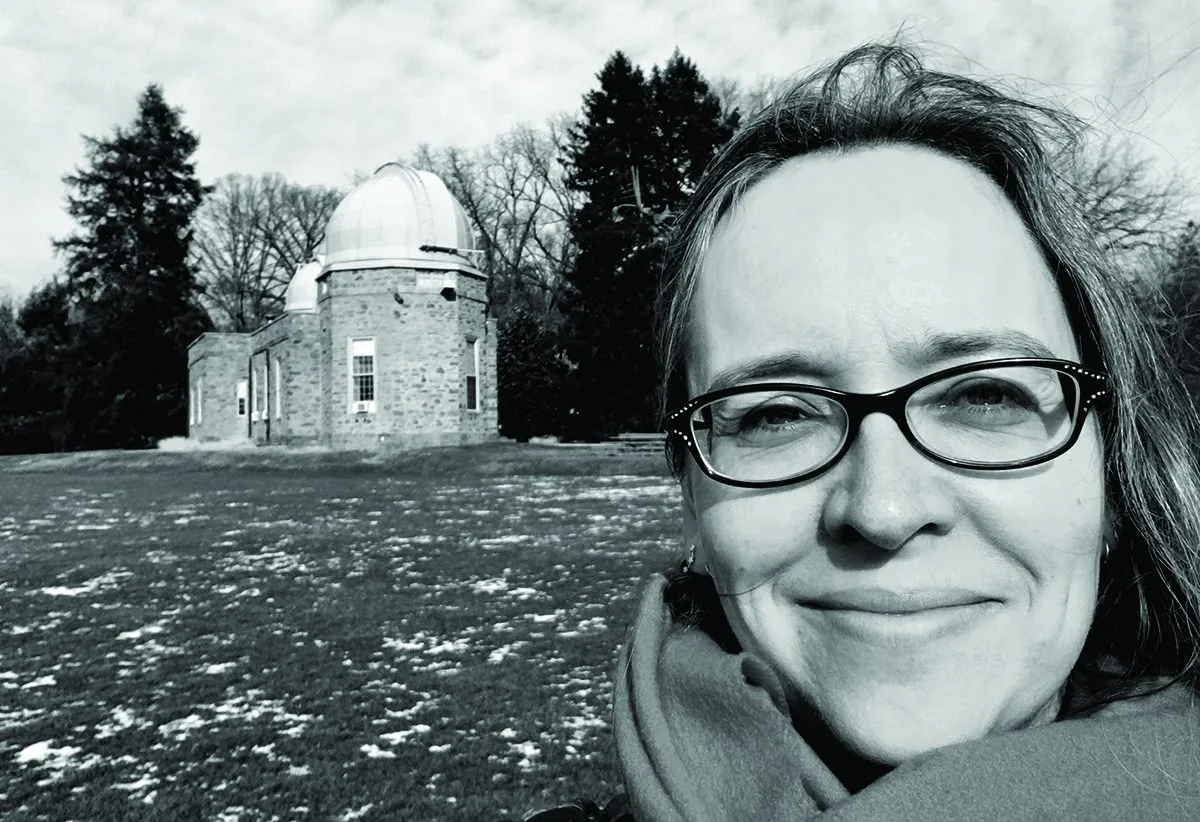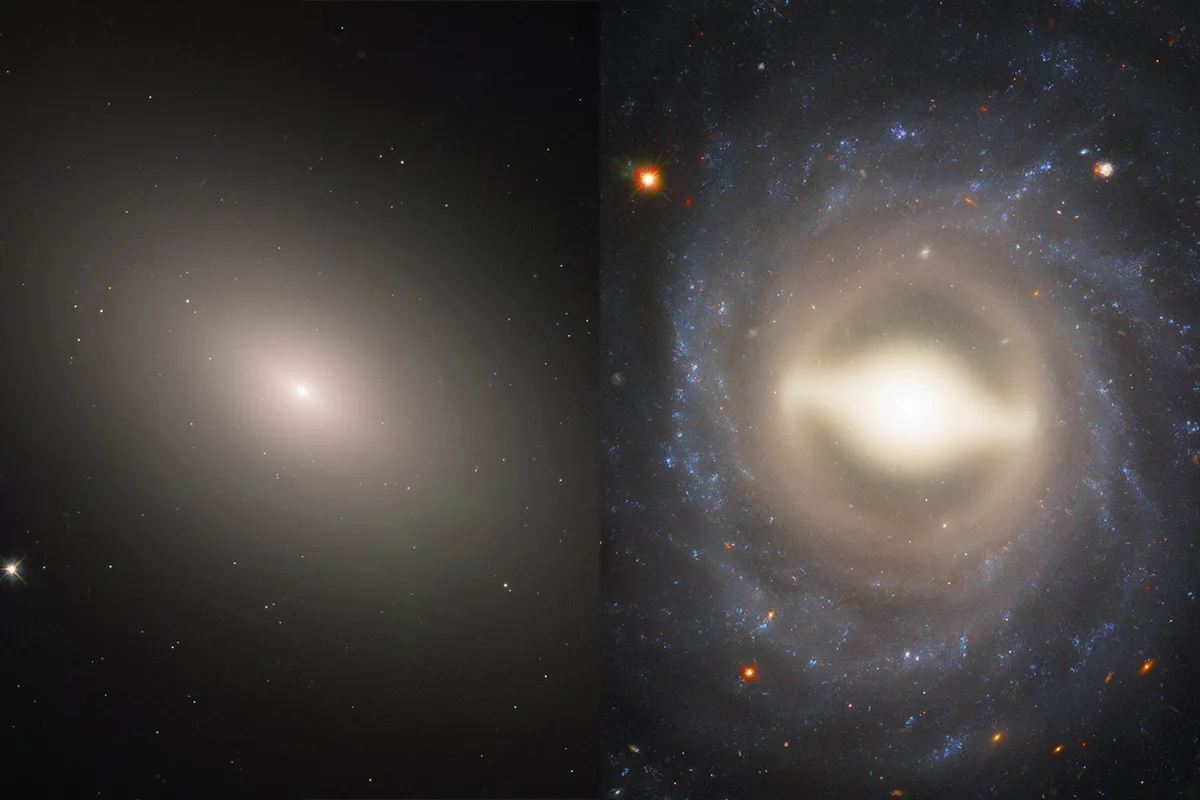In 1926 the American astronomer Edwin Hubble developed a classification system to describe the evolution of galaxies and their development from an elliptical to a spiral formation.
This was around the same time that he settled astronomy's Great Debate by calculating that the Andromeda Galaxy must be well beyond our own Galaxy.
Hubble allocated numbers to the elliptical galaxies to characterise each one's ellipticity, E0 being nearly round and E7 being very elliptical.
Spiral galaxies, according to Hubble’s system, were assigned letters from a to c according to how tightly wound they are, Sa being very tightly wound and Sc being more loosely wound.
The system was dubbed ‘Hubble’s tuning fork’ because of the way in which galactic evolution appears to generally go one of two ways once an elliptical galaxy begins evolving into a spiral (scroll further down for an illustration of this).
However, one of the key characteristics of the tuning fork system is a correlation between a spiral galaxy’s bright bulge and how tightly the arms are wound.
A study using the citizen science project Galaxy Zoo has found that this correlation might not be as accurate as Hubble predicted.
We spoke to Galaxy Zoo project scientist Prof Karen Masters to find out more.

What is the Galaxy Zoo project?
It’s a website project that has been running for 12 years, where we invite anyone to look at galaxies and answer questions describing the different structures they see.
For example, they may see spiral arms, bars (straight formations across galaxies with a concentration of stars) or sometimes no structure at all.
We collect information from about 30-40 people per galaxy so we’re able to get a consensus crowd-sourced answer for what is visible in that image of that galaxy. We use this to investigate a galaxy’s evolution.
What can you tell about a galaxy’s evolution from its shape?
The shape tells you quite a lot about how the galaxy is assembled over time and also about the motions of stars in the galaxy now.
We see spirals and discs where the stars are all moving in the same plane. Smoother galaxies, known as ellipticals, are less likely to have so much of that coherent motion, but have stars in a more random motion.
That is most likely a characteristic of having been assembled from lots of galaxies that merged together and came in at different angles.

What did citizen scientists do in your spiral galaxy study?
The first thing they had to do was find all the spiral galaxies in the original list of 250,000 galaxies from the Sloan Digital Sky Survey (SDSS).
In the end, they had about 6,000 galaxies. Most people probably look at between 20 to 50 galaxies, and they compared their answers to classifications from other catalogues.
What is Hubble’s tuning fork?
It is a galaxy classification scheme invented by Edwin Hubble in the 1920s.
The diagram used to represent it resembles a tuning fork because the spiral galaxies are split into two tines – one showing the spiral galaxy sequence with a bar and the other showing those without a bar.
Then the elliptical galaxy sequence is a single line that meets them, forming the handle of the tuning fork.
Hubble talked about the size of the bulge – the central concentration of light you find in some spiral galaxies – and its correlation to how the arms are wound. He claimed that most spiral galaxies had a big bulge and tightly wound arms, or a small bulge and loosely wound arms.

What did your study show?
The surprising find was that the bulge size did not correlate with the arm winding.
The expectation from the Hubble tuning fork is that spiral galaxies with small central light concentrations would have loose arms and those with large central light concentrations would have tight arms, making almost a full circle.
When we plotted the observations for these two things in our study, we didn’t see that correlation.

How does this help us understand galaxies better?
I think we are dealing with the questions of what spiral arms are, and what forms them. We have known about spiral arms for about 150 years and theories attempting to explain what they are have been well established since the 1960s.
So it was a surprise to me here to be thinking that maybe we don’t really have a good agreement over what is the dominant mechanism by which spiral arms form.
There are theories that predict Hubble’s correlation. People often talk of spiral arms as being density waves, much like with a traffic jam – where you get a build up of cars and then you suddenly pass through it.
The stars are doing that in the density wave model: they pile up and then pass through it. A static density wave is the model everyone said explained the spiral arm because it fitted the tuning fork, but we are saying it doesn’t have to be that.
We don’t see Hubble’s correlation.
Prof Karen Masters is an associate professor of physics and astronomy at Haverford College in Philadelphia, USA, and the Galaxy Zoo project scientist. This interview originally appeared in the October 2019 issue of BBC Sky at Night Magazine.
